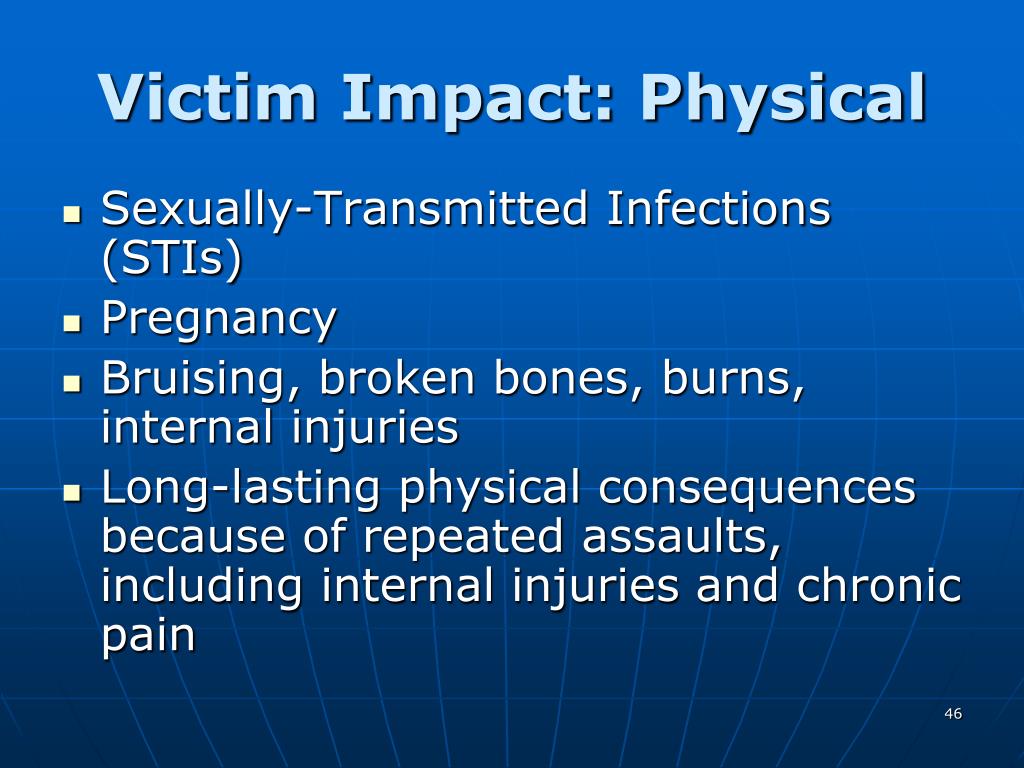

- #The majority of sexual assaults are committed by strangers trial
- #The majority of sexual assaults are committed by strangers plus
We think it is important to identify the patterns that emerge from this large group of cases in order to present a picture of the kinds of cases that are making it to trial and sentencing in Canadian courts. Instead, they are cases of sexual assault by biological fathers, stepfathers, uncles, older brothers, adult friends of the family, and, in a small number of cases, strangers. Nor are most of these cases ones in which an adult uses his position of power and influence to sexually assault large numbers of unrelated victims. Only a small number of the cases involved girls in relationships with young men just outside the close-in-age exceptions, and, in many of those cases, the complainant did not describe herself as a willing participant. Our research confirms that, overwhelmingly, these are not technical sexual assaults-so-called statutory rapes-that turn on arbitrary age distinctions. We argue that a narrow focus on the age of consent risks obscuring the kind of sexual abuse that makes up the large majority of these cases. In this article, we look at the Canadian criminal justice system’s treatment of sexual assault against adolescent girls through an examination of all available Canadian case law over a three-year period from 2014 to 2016 inclusive. When popular attention is directed to the sexual abuse of teenagers, the focus is often on institutional cases with large numbers of male and female victims, such as abuse by the clergy or in the context of sports coaching or similar pursuits. 3 Some of the age-of-consent research has contended that adolescent experimentation has been over-criminalized, 4 which would suggest that prosecutions are targeting very young men, just outside the close-in-age exceptions. 2 While the existing data are helpful in identifying the increased incidence of sexual violence for this group of victims, very little Canadian research has addressed the issues around prosecution of these cases as a discrete group by the criminal justice system, beyond consideration of the age of consent. The cases present a picture of crimes in which intersecting inequalities and vulnerabilities help to explain why this demographic is targeted for sexual violence more than any other age group.Īdolescent girls face a higher risk of sexual assault than women and girls in any other age group. In approximately 30 percent of cases, the complainant was asleep or intoxicated when at least some of the abuse was initiated. The small number of cases involving close-in-age peers often included violence additional to the sexual assault. The average age difference between the accused and the complainant was nineteen years and, where family members were excluded, 15.6 years. A significant majority of cases under review involved men considerably older than the complainant. This article examines three years of Canadian case law involving sexual offences against adolescent girls between the ages of twelve and seventeen inclusive, with a view to identifying the types of cases that are making it to court, whether these cases are resulting in convictions, and what are the types of sentences being imposed on individuals convicted of these offences.
#The majority of sexual assaults are committed by strangers plus
Les cas présentent un portrait des crimes où l’intersection des inégalités et des vulnérabilités contribue à expliquer pourquoi ce groupe démographique est ciblé par la violence sexuelle plus que tout autre groupe d’âge.

Dans environ 30 pour cent des cas, la plaignante dormait ou était en état d’ébriété lorsqu’au moins une partie de ces agressions était commise. Les quelques cas impliquant de jeunes hommes impliquaient souvent de la violence en plus de l’agression sexuelle. La différence d’âge moyenne entre l’accusé et la plaignante était de dix-neuf ans et, en excluant les membres de la famille, de 15,6 ans. Dans la grande majorité des cas examinés, les hommes étaient considérablement plus âgés que les plaignantes. Elles tentent d’établir quels types de cas se rendent au tribunal, qu’ils donnent lieu à des condamnations ou non, et quels types de peine sont imposés aux individus condamnés pour ces infractions. Dans le présent article, les auteures passent en revue trois ans de jurisprudence canadienne impliquant des infractions de nature sexuelle contre des adolescentes âgées de douze à dix-sept ans.


 0 kommentar(er)
0 kommentar(er)
